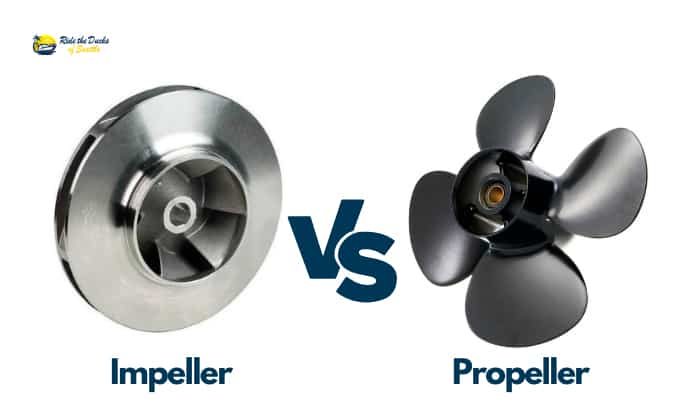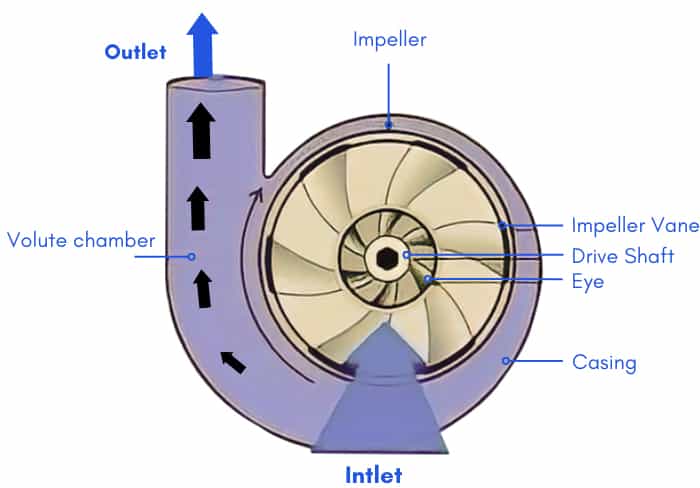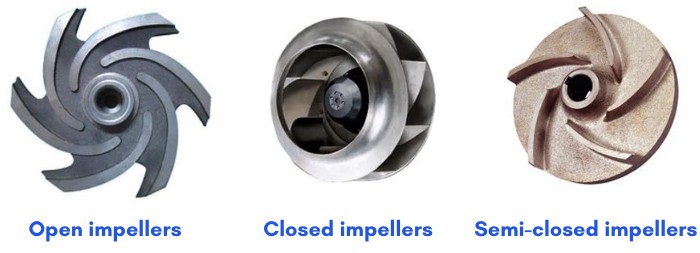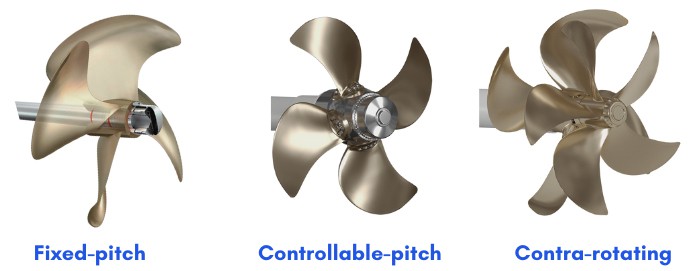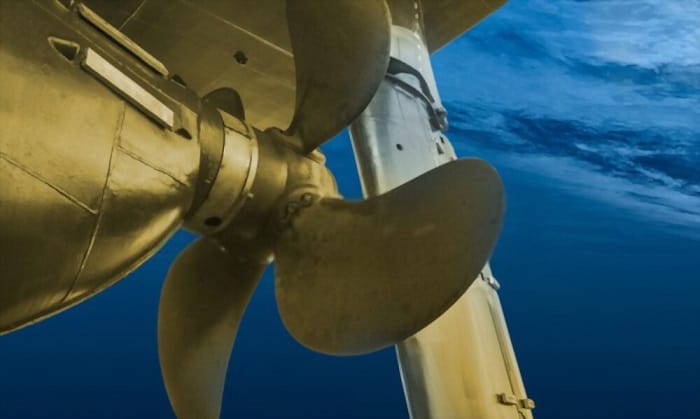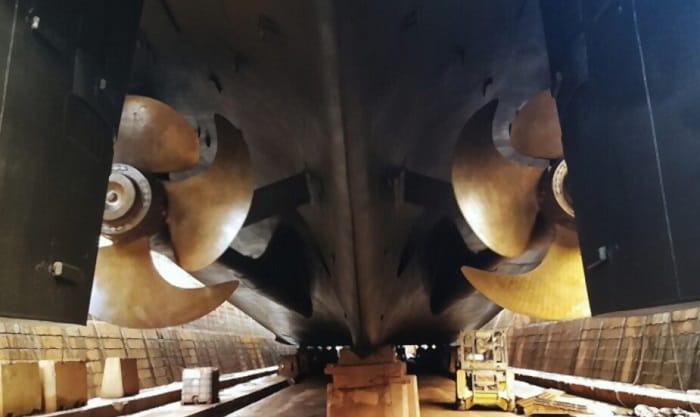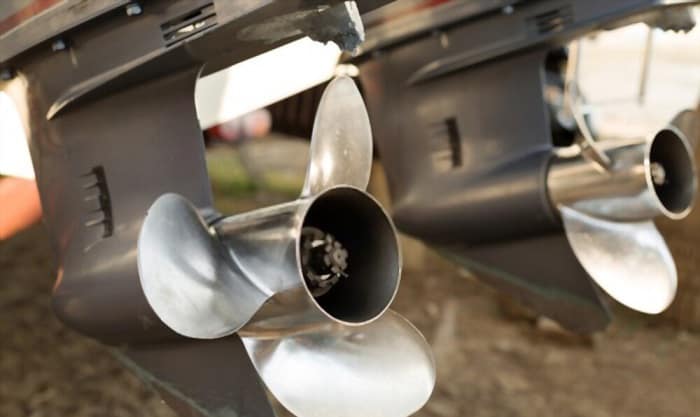Differentiating propeller vs impeller can be challenging for some people, especially new boat owners. After all, they sound alike and are integral to modern boats.
However, propellers and impellers are two dissenting technologies, with the following differences.
| Propeller | Impeller | |
| Principal function | Boat propulsion | Engine cooling |
| Containment | No housing; external | Within pump housing |
| Water interaction | Pushes fluid | Draws fluid |
| Principal component | Blades | Vanes |
| Motion generation | Clockwise rotation | Forward motion |
Of course, you need more information than this table. Please continue reading to have a comprehensive understanding of what sets impellers and propellers apart.
Table of Contents
- What is an Impeller?
- How Does an Impeller Work?
- Types of Impellers
- How Impellers Compare With Other Boat Components
- What is a Propeller?
- How Does a Propeller Work?
- Types of Propellers
- How Propellers Compare With Other Boat Components
- Similarities Between an Impeller and Propeller
- Differences Between a Propeller and Impeller
- Tips for Caring and Maintaining Propellers and Impellers
- FAQs
- Conclusion
What is an Impeller?
Many dictionaries define impeller units as “rotors” found in conduits designed to move fluid. Others offer a more profound impeller meaning, clarifying that it is a device that increases fluid flow and pressure.
In boat engines, impellers are an integral part of a pump system that draws and circulates fluid (or water) through the motor’s various chambers and keeps it cool.
Imagine a disk with a hole in the center (“hub”) for rotating or spinning. Next, you have quarter-circle rubberized molded “blades” known as “vanes.” These vanes are like the boards on a waterwheel.
Like a waterwheel, water pushes the “vanes,” rotating them relative to the “hub.” This action allows the system to deliver and circulate cool water throughout the engine, preventing overheating.
How Does an Impeller Work?
An impeller for boat engines is part of a larger marine engine cooling system. An inlet valve allows cool water outside the vessel to enter a chamber that empties into the boat’s centrifugal pump.
Water entering this component pushes the “vanes” forward. The centrifugal pump rotates, forcing water outward at a high velocity. Increasing rotational speeds also raises the pressure inside the pump housing. In turn, this facilitates fluid distribution throughout the engine to keep it cool.
Let us put it this way. The impeller works like a suction. It pulls water from outside the boat and transfers centrifugal energy to the water, cooling the engine.
Types of Impellers
Impellers come in three principal types, as follows.
- Open impellers – Often found in small pumps and mounted directly on the shafts, open-type impellers are effortless to maintain because they do not have “walls.” However, they are the weakest among the three types.
- Shrouded impellers (Closed impellers)– These impellers are the most durable because they have front and rear “walls,” making them suitable for large pumps. Sadly, these units are a pain to maintain and clean, so they can only be used in clear bodies of water.
- Semi-closed impellers – Although its efficiency is slightly lower than an open type, this impeller is stronger because of its partial covering on the back. They’re the perfect balance between open and closed impellers—being relatively strong and easy to clean.
How Impellers Compare With Other Boat Components
Impellers are part of a boat’s engine, mainly its cooling system. So, how does it compare to other components?
Differentiating impeller vs expeller is easy. The latter sits behind the former, spinning in the shaft to prevent the water from escaping.
You might also hear some folks pitting impeller versus agitator. Both technologies are part of a top-loading washing machine, where the impeller is a component of the agitator (together with a shaft).
Some boats might have a turbine impeller, an engine that generates power from a fluid’s rotational force (thanks to the impeller!).
What is a Propeller?
A boat’s propeller is similar to an electric fan that generates “wind.” It is like an airplane propeller that “pulls” air in front and “pushes” it behind to move the aircraft forward.
Hence, we can consider a boat’s propeller as an integral component of its propulsion system. It has at least two blades (compared to the impeller’s “vanes”) spinning around a shaft.
How Does a Propeller Work?
Like aircraft propellers, boat propellers rotate around a shaft. Power from the engine causes the shaft (and the propeller) to spin.
The propellers convert rotational force (i.e., torque) into thrust. Its action hinges on the blade’s shape and angle. As the propeller rotates, water moves down and flows behind each blade. The blade then pushes the water behind, propelling the boat forward.
Types of Propellers
You might wonder how many boat propeller types exist. Here are three.
- Fixed-pitch – A mainstay in most recreational vessels, these props have fixed “blade pitches,” making them powerful and durable.
- Controllable-pitch – Although more expensive and costly to maintain, these propellers have variable blade pitch. They are perfect for watercraft with varying loads.
- Contra-rotating – Some boats have two propellers on a single shaft – one spins clockwise while another rotates counter. Although these props are not as sturdy as fixed-pitch types, they offer unmatched flexibility and maneuverability.
Outside of boating, there are also different propeller types for other purposes. For instance, a pump propeller is common in agricultural, chemical, and water treatment applications because it can produce linear motion.
There is also a propeller mixer (for agitation and mixing liquids) and a propeller agitator (an uber-quick stirrer).
So, what is the difference between impeller and propeller agitator? The former is a crucial component of your boat engine’s cooling system. On the other hand, the latter is perfect for “stirring” highly concentrated solutions and low-viscosity fluids.
How Propellers Compare With Other Boat Components
Most people would struggle to differentiate a propeller vs turbine vs jet (i.e., waterjet).
Waterjet is a boat propulsion system that shoots high-velocity, high-pressure water streams to move the boat forward. You see this in speedboats and jet skis.
Meanwhile, propellers rely on torque to propel the boat forward, making them more efficient than waterjets.
On the other hand, turbines are the diametrical opposites of propellers. They are like wind turbines that harness air power to produce electricity. Hence, turbines extract mechanical energy while a prop generates it.
So, how do we differentiate propeller vs impeller vs turbine?
Propellers move a boat on the water, relying on the impeller’s ability to keep the engine operating at optimum temperature without overheating. Meanwhile, the turbine can be an engine that converts mechanical energy into other energy forms, like electricity.
Similarities Between an Impeller and Propeller
Propellers and impellers are similar in the following aspects.
- Propellers and impellers are water-dependent. The former uses water to make the boat move forward, while the latter needs water to cool the engine.
- Both devices depend on other technologies. Propellers rely on an engine to turn the shaft, while impellers require a centrifugal pump (also in the engine) to work.
- Impellers and propellers spin around a shaft to produce water effects – impellers draw water while propellers push water.
- Both technologies require adequate lubrication and strict maintenance to minimize the effects of wear and tear and ensure peak performance.
Differences Between a Propeller and Impeller
Let us now compare impeller vs propeller boat components.
- Propellers receive power from the engine, turning around a shaft to move the boat on the water as part of its propulsion system. Meanwhile, an impeller is an integral component of the watercraft’s engine cooling mechanism.
- An impeller’s location is inside the boat engine, within the centrifugal pump housing. On the other hand, a propeller is outside the boat at the stern below the waterline.
- Impellers “pull” water from the boat’s external environment to cool the engine. Meanwhile, propellers “carve” the water in front and “pushes” it to the back to propel the boat.
- Propellers have “blades,” while impellers feature “vanes.”
- Impellers rotate with a forward movement, while propellers spin around the shaft’s axis in a clockwise manner.
Tips for Caring and Maintaining Propellers and Impellers
Here are some tips for caring for and maintaining impellers and propellers.
1, Impellers
- Keep impellers well-lubricated with glycerin. However, some brands might only require dishwashing soap. You might want to check your boat manufacturer’s instructions.
- Use an impeller puller – not a screwdriver – to remove and replace an old or damaged impeller.
- Replace an impeller’s gasket immediately once it becomes brittle.
- Always carry a spare impeller in your boat in case of emergency.
2. Propellers
- Inspect the propeller for corrosion, cracks, dents, nicks, bends, and other signs of damage or wear or tear. Perform this visual assessment before heading out and right after boating.
- Observe a regular maintenance regimen, including the removal of debris from propeller blades and other components. Check your manufacturer’s recommendation for the maintenance schedule.
- Assess the prop blade’s pitch or angle and replace the propeller if any problem occurs.
- Evaluate the propeller shaft, hub, seal, and other components.
FAQs
Is a propeller a type of impeller?
No, a propeller is not a type of impeller. Although props and impellers look somewhat identical, they function differently.
Impellers are internal devices (inside a pump casing), while propellers are external (outside the boat, at the stern). Props also push water, while impellers “pull” fluid.
How long do a propeller and impeller last?
Impellers vary in longevity, depending on the manufacturer. However, the average range is around 100 to 300 hours of operation, with 200 hours being the most common recommendation.
On the other hand, boat propellers have a longer lifespan than impellers. Although some brands might be more durable, you can expect a marine prop to last 1,500 to 2,000 operating hours.
Conclusion
Differentiating propeller vs impeller is not as challenging as some people think. Impellers are inside the boat engine as part of the centrifugal pump that cools the motor during use. On the other hand, propellers need power from the engine to rotate and move the boat on the water.
Although different, props and impellers are essential to keep a boat moving. Impellers prevent engine overheating, allowing the latter to rotate the propeller and move the boat.

Ten years of enjoying countless trips on boats never made me love them any less! So I am here to put all those experiences into good use for other boaters who want to have a safe and fun trip with their friends and families.

